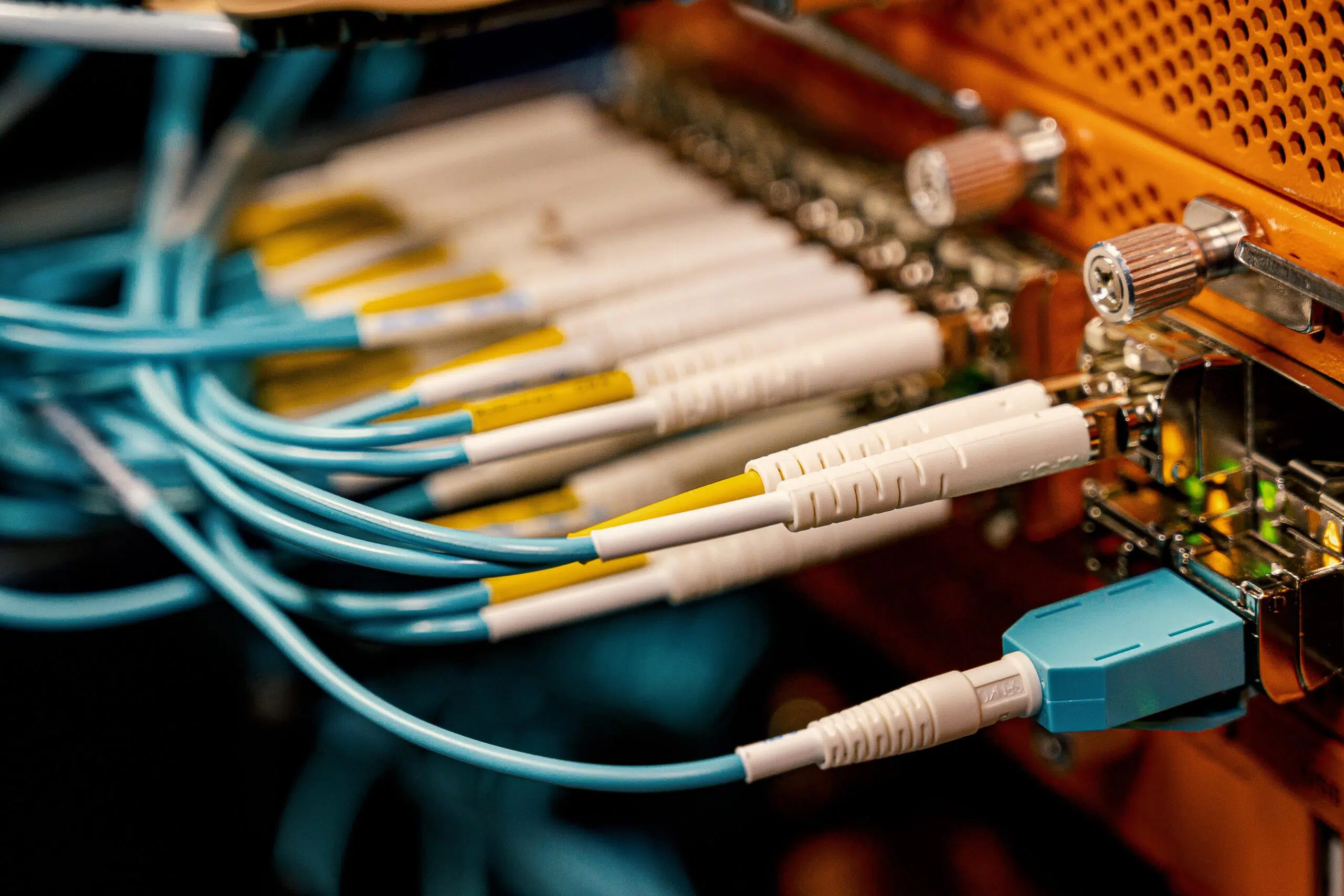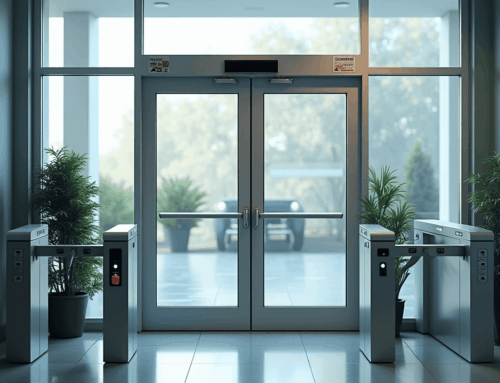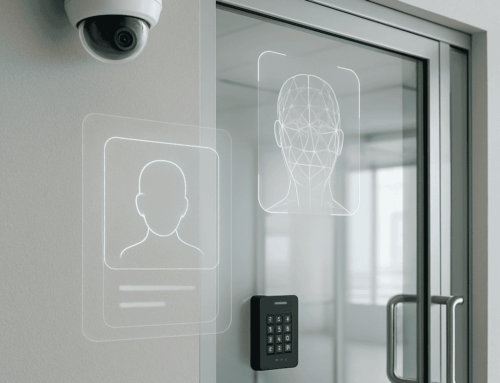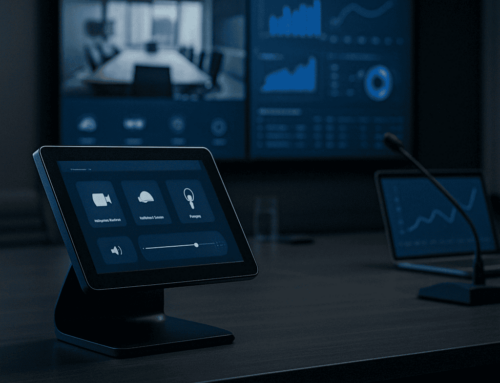A Guide To Understanding Fiber Optic Installation

Fiber optic installation is a tricky and expensive process, but is it worth it for the high download speeds? We’ll look at some of the considerations for installing fiber optics at your worksite and if it makes sense for you to upgrade.
What Is Fiber Optic Cable?
There are two primary families of cable used to transmit signals in data networks such as the internet: (1) Copper wire, and (2) fiber optics. Copper is by far the oldest type of cable in use — ethernet cables are an example of low-voltage cabling used for signal transmission, coaxial cable is another common type. In copper wire, low-voltage pulses of electricity pass down the length of the wire and are converted into binary information that is processed by a computer at the other end. In fiber optic wire, the information passes down a glass filament in the form of light pulses, which the computer processes.
Within the family of fiber optic cable, there are two primary subdivisions: (1) single mode, and (2) multi-mode. In single-mode fiber optic cable, the filament is extremely small (9 µm) compared to a filament thickness of 50 µm for multi-mode. Single-mode fiber generally only carries a single signal or ray of light, whereas multi-mode can transmit multiple rays of light. Each type of fiber optic cable has real-world applications. Choosing the right one is often a matter of assessing your use case, infrastructure, and budget.
Why Businesses Are Switching To Fiber Optics
Although there is more infrastructure to support copper cable networks, these networks have bandwidth limitations that can handicap a modern, internet-savvy business. The COVID-19 pandemic made it abundantly clear that the internet has become a utility that our economy relies on for survival, just like it relies on electricity, clean water, and sewers.
While high-end copper networks are capable of transmitting low gigabit speeds, they suffer from a range of issues, such as signal degradation, interference, inefficiency, and asymmetrical speeds (i.e. where download speeds are much higher than upload speeds). Fiber optic cables can transmit up to 100-gigabit speeds with low power requirements, symmetrical speeds, no electrical interference, while also being impervious to corrosion.
While fiber optic cables form the backbone that many of the world’s data centers (and thus the internet) rely on, fiber optic networks are rare at a local level. However, that is changing fast as more and more cities install municipal fiber networks (another nod to the similarities between the internet and traditional utility services). Businesses are also seeing the benefits of converting to fiber networks, sometimes even paying to install fiber optics along public roadways just so they can have access.
Applications For Fiber Optic Installations
Fiber optic cabling is a superior option in nearly all applications, just as long as it isn’t prohibitive to install the proper infrastructure.
Outside Plant or OSP
This is where fiber optic cable is installed “outside the building” and is either buried in the ground or hung from poles alongside other utility lines. These installations are usually measured in miles rather than feet of cable installed and provide connectivity between major switches or transmitting stations. This type of installation can include services such as community antenna television networks as well as internet providers. Most OSP installations use single-mode fiber optic cable due to its excellent signal quality over long distances.
Premises or In-building
Premises cabling is what you might think of more commonly where fiber optic cable is installed throughout a building or a campus to provide a local high-speed network. This type of installation is more likely to use multi-mode fiber optic cabling due to shorter run-lengths and the lower cost of multi-mode transceivers (compared to installing lots of single-mode transceivers).
Platform
There are also situations where fiber optic cable is preferable on a very small scale, such as in an airplane or the International Space Station. The performance characteristics of fiber optics make it the go-to networking solution in applications where electrical interference could be catastrophic. Fiber optic networks are also more resistant to being hacked by unauthorized individuals.
Wiring Operations
Fiber optic cabling also offers advantages in that it doesn’t require signal repeaters, power boosters, grounding, or additional cooling in telco closets or rooms. The simpler operational requirements can help to offset the higher initial installation cost that is often associated with fiber-optic networks.
Fiber Optic Installation Costs

There are many variables that contribute to the overall cost of a new fiber optic installation. In general, it will cost between $1 and $6 per linear foot of cable installed. For example, 12-strand single-mode fiber cable costs between $8,500 and $10,000 per mile, whereas 96-strand single-mode cable costs between $20,000 and $30,000 per mile. Additionally, you need to add in the cost for conduit, which runs between $2 and $4 per linear foot depending on duct size. Obviously, cable diameter will impact your duct size, but it can be easy to forget that you should aim for a 40% fill ratio.
Ballpark estimates are likely to create more trouble than they are worth due to the complexity and specific constraints of any given application. Even the historical costs that the US Department of Transportation publishes are old enough to be troublesome when building a serious estimate.
You Should Hire Professionals To Install Your Fiber Optic Network
Conventional low-voltage copper cable has been around a long time and there are lots of people with experience installing it. Fiber optic cable is a high-performance technology that demands proper respect, tooling, and understanding of industry standards — it’s critical that you work with professional fiber optic installers. As you’ve heard it said, “if you think it’s expensive to hire a professional, try hiring an amateur.” While fiber optic cable is more robust in some ways, it is fragile in others — requiring specific knowledge for pulling, conduit routing, splicing, and terminating. Lacking proper knowledge of the installation process can result in damaged materials.
Safety
Fiber optic cable doesn’t pose the same risks as electrical cable. It poses different risks, such as eye safety, chemicals, sparks from fusion splicing, shard disposal, and more. Relying on trained installers lowers your risk of a job site accident or critical mistake that could result in additional costs down the road.
Permits And City Regulations
Fiber optic networks are a newer technology and you need to plan for municipal permitting processes that can add weeks or months to your build time. Professional installers will be familiar with these constraints and can help avoid unplanned delays due to bureaucracy.
About i.e.Smart Systems
i.e.Smart Systems is a Houston, TX based technology integration partner that specializes in design and installation of audio/visual technology and structured cabling. For more than three decades, our team of in-house experts has partnered with business owners, architectural firms, general contractors, construction managers, real estate developers, and designers in the Houston market, to deliver reliable, scalable solutions that align with their unique goals.




